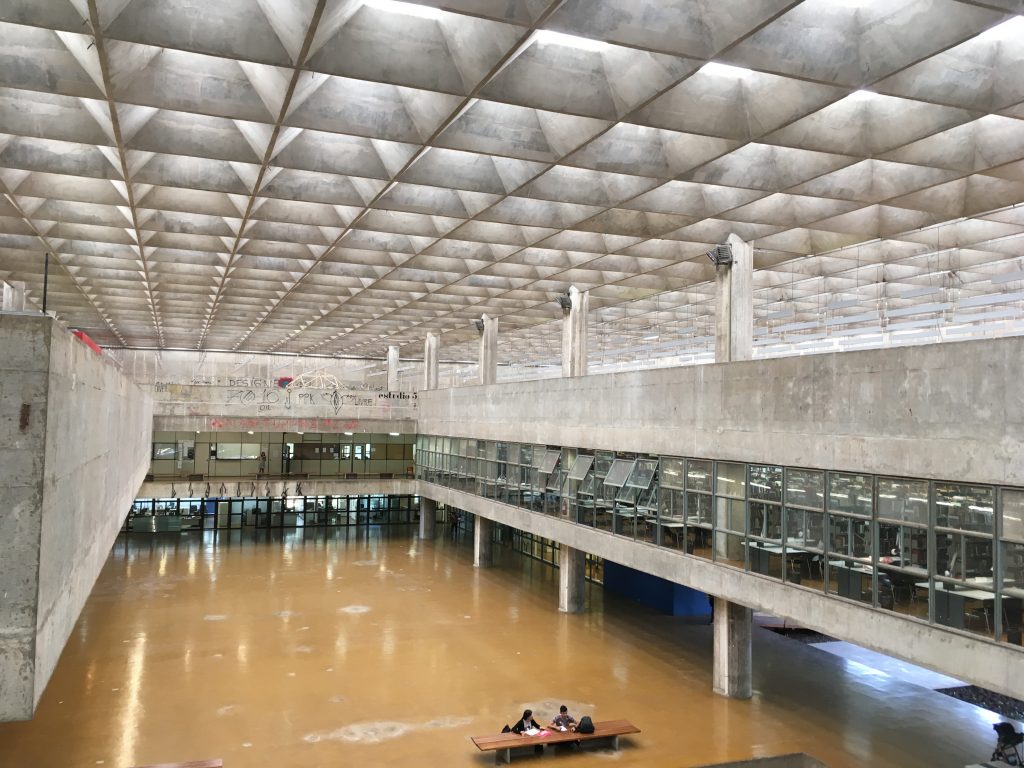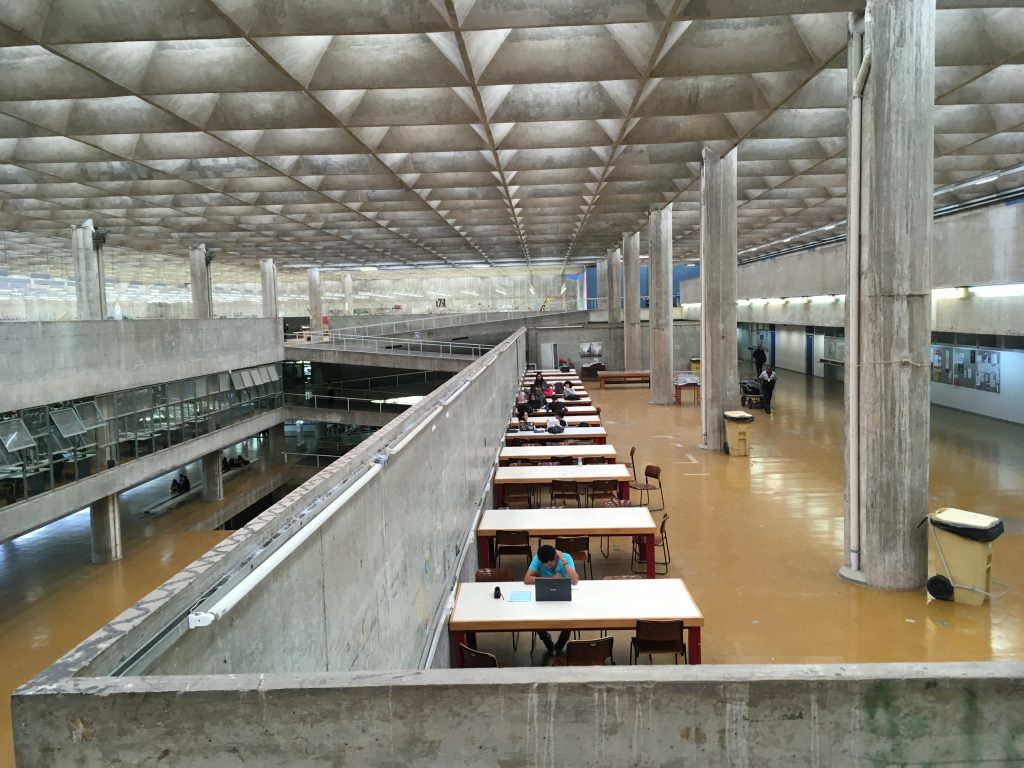Space matters when we need creativity. According to research, when a ceiling is high, people become creative because a high (vs. low) ceiling primes the concept of freedom (vs. confinement). Similarly, Jump Associates has various types of cubicles for designers; “garage” cubicles are widely open for those who want to be creative, whereas “Zen rooms” are tiny small cubicles. Interestingly, Dev Patnaik, the founder of the Jump Associates, mentioned that US people prefer garage offices whereas Japanese clients like Zen rooms.
When I visited the design department at the University of Sao Paulo, one of the best universities in Brazil, I was shocked by its building. It has a huge empty space in the middle and has tons of bright, natural lights. I learned that empty space not only increases the perceived value of a product inside. It boosts the creativity of the people inside.


Inside the building, the walls allow people to write and erase easily, which also may enhance creativity.

***
Reference
Meyers-Levy, J., & Zhu, R. (Juliet). (2007). The Influence of Ceiling Height: The Effect of Priming on the Type of Processing That People Use. Journal of Consumer Research, 34(2), 174–186.
This article demonstrates that variations in ceiling height can prime concepts that, in turn, affect how consumers process information. We theorized that when reasonably salient, a high versus low ceiling can prime the concepts of freedom versus confinement, respectively. These concepts, in turn, can prompt consumers’ use of predominately relational versus item-specific processing. Three studies found support for this theorizing. On a variety of measures, ceiling height–induced relational or item-specific processing was indicated by people’s reliance on integrated and abstract versus discrete and concrete ideation. Hence, this research sheds light on when and how ceiling height can affect consumers’ responses.

